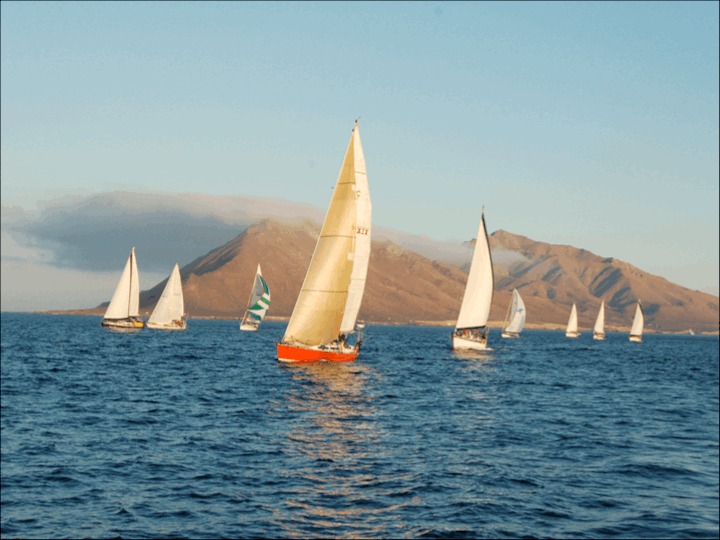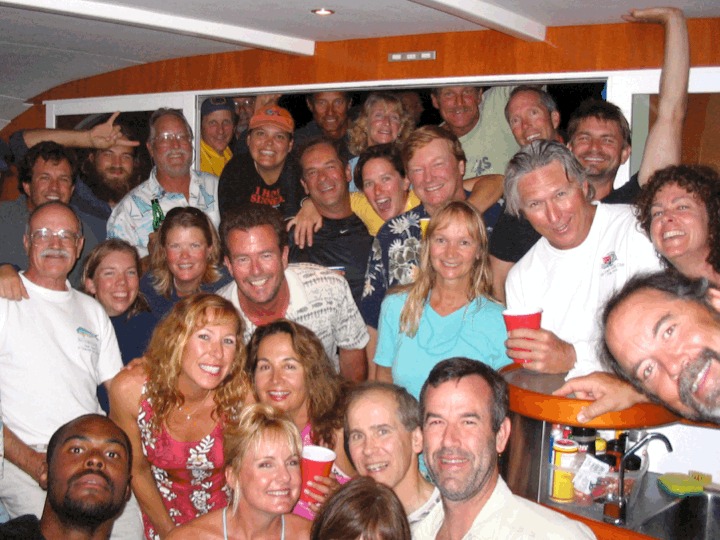
Best Emergency Communications Equipment for the Baja Ha-Ha
On a recent sail from Cabo to San Diego, Baja Ha-Ha Assistant Poobah Patsy Verhoeven experienced a minor issue with her Starlink — it had frozen in the “stow” position. Fortunately a crew member was able to climb up and rotate the antenna 90 degrees, and from then on it worked perfectly all the way to San Diego. The story clearly got the Ha-Ha’s Grand Poobah thinking about communications for the upcoming rally, and prompted him to share his list of pros and cons for the various options available to cruisers.
Not to freak people out, but there have been a number of recreational-boat emergencies lately that required or could have used some form of emergency communication. But the Poobah wants to note that of the more than 3,000 boats that have done the Baja Ha-Ha, only two have been lost. One was sunk by a whale, but thanks to an EPIRB and the Coast Guard, the entire crew was rescued in a matter of hours. The second was a Newport 41 inexplicably driven ashore during daylight in calm weather a few miles north of Turtle Bay. If memory serves, there has only been one dismasting.
The following is a list of recommended emergency communication equipment in the order of desirability.
1) A Garmin inReach or similar. This is a handheld battery-operated device that can leave a breadcrumb trail and can send an SOS with the press of a button no matter where you are in the world. Of particular value is the fact you can text back and forth to communicate the nature of your emergency. As of October last year over 10,000 people, most of them on land, had received help as a result of inReach. (SPOT X is a somewhat similar device but uses a “bent pipe” system that dramatically limits how far offshore it works.)
2) EPIRBs. While the Coast Guard also encourages the use of inReach, their number-one recommended emergency device is the EPIRB. The signal is a little stronger, and thus, unlike the inReach, it can still communicate a few feet underwater. The big drawback of EPIRBs is they are one-way communication. You have no way of knowing if your signal has been heard, and you have no way of communicating the nature of your emergency. It’s best, of course, to have both an inReach and an EPIRB.
3) Iridium Satphone. Like an inReach and EPIRBs, you can take a satphone in a liferaft. And like an inReach, it gives you two-way communication. Our longtime experience with satphones is that there have been times when they didn’t work well, if at all.
4) Starlink* is, among many other things, the best emergency device — if you have power and don’t have to get into a liferaft.
5) Ham or SSB radio. While these are great because an unlimited number of people can hear you at one time, they are dated technology and you can’t take them in a liferaft.
6) While it’s not a device, sailing in events such as the Ha-Ha and the Pacific Puddle Jump have two safety features: 1) There is a certain amount of safety in numbers, particularly in the Ha-Ha, where there are a lot of boats sailing the same mostly straight-line legs. And 2) Both events offer an optional breadcrumb-trail feature.

We sailors should be thankful for modern technology. When I started sailing in the ’70s, there were several stories of cruisers who weren’t picked up from their liferafts for as much as three months. In emergency seminars a big topic was how much pee or seawater you could drink a day without harming yourself. This was in part because most early EPIRBs did not work, and there were no alternatives. Thanks to today’s communications, if you find yourself in a liferaft on almost any of the main cruising routes, if you have the right equipment, you could be picked up in 18 hours — and often less. The worldwide rescue system is a modern miracle. We can’t count the lives it would have saved in decades past. So please, avail yourself of it.
*Starlink’s plans can be confusing and have been changing rapidly, so we’ll go over them in detail later. Except, however, to say that if you can, the smartest thing would be to buy a Starlink in Mexico, where the equipment is a couple of hundred dollars less than in the US and where the monthly charges are significantly less. In addition, if you have a US Starlink you are likely to have to change your base country to Mexico after a few months. Starlink deliveries have been swift within Mexico, as in just a couple of days.
If you haven’t signed up for the Ha-Ha, there’s still time. The event runs from October 30 to November 11. And while we don’t want to alarm anyone, as we’ve mentioned previously, this may be the last Ha-Ha ever.

Sign up at www.baja-haha.com.You might well have the time of your life.

> Except, however, to say that if you can, the smartest thing would be to buy a Starlink in Mexico,
Actually, unless you are working or inextricably addicted to social media, the truly smartest thing is to not buy Starlink and enjoy the real world. Try it and see.
Bruce
Right on Bruce!!
I have to agree with Peter and Bruce above . . . one of my prime directives for cruising is to “disconnect”. One of the more interesting things I noticed when I was cruising back in 2006 – 2010 was that after spending a month or so out on the Sea of Cortez without any email, etc., when I did get into a marina and hooked back into the world internet, it was always the same news! New time, new date, new names sometimes but always the same and nothing really changed in the world . . . Given all that, and the safety concerns, I will be adding the Iridium GO Exec to my systems along with EPIRB, PLB, AIS, cell phone, and VHF (I did carry an Iridium satellite phone before also and it was critical when I was sailing back on the BASH after a lightning strike took out my other instruments!)